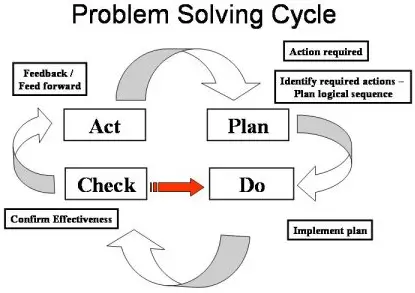 Problem-solving is a mental process and is part of the larger problem process that includes problem finding and problem shaping. Considered the most complex of all intellectual functions, problem-solving has been defined as a higher-order cognitive process that requires the modulation and control of more routine or fundamental skills. Problem-solving occurs when an organism or an artificial intelligence system needs to move from a given state to the desired goal state. [1]
Problem-solving is a mental process and is part of the larger problem process that includes problem finding and problem shaping. Considered the most complex of all intellectual functions, problem-solving has been defined as a higher-order cognitive process that requires the modulation and control of more routine or fundamental skills. Problem-solving occurs when an organism or an artificial intelligence system needs to move from a given state to the desired goal state. [1]
A number of problem-solving techniques are listed below: [1]
- Abstraction: solving the problem in a model of the system before applying it to the real system
- Analogy: using a solution that solved an analogous problem
- Brainstorming: (especially among groups of people) suggesting a large number of solutions or ideas and combining and developing them until an optimum is found
- Divide and conquer: breaking down a large, complex problem into smaller, solvable problems
- Hypothesis testing: assuming a possible explanation to the problem and trying to prove (or, in some contexts, disprove) the assumption
- Lateral thinking: approaching solutions indirectly and creatively
- Means-ends analysis: choosing an action at each step to move closer to the goal
- Method of focal objects: synthesizing seemingly non-matching characteristics of different objects into something new
- Morphological analysis: assessing the output and interactions of an entire system
- Reduction: transforming the problem into another problem for which solutions exist
- Research: employing existing ideas or adapting existing solutions to similar problems
- Root cause analysis: eliminating the cause of the problem
- Trial-and-error: testing possible solutions until the right one is found
AcqLinks and References:
- [1] Webpage: Wikipedia – Problem Solving
- FEMA Decision Making and Problem Solving
- Creative Problem Solving
Updated: 7/16/2017
